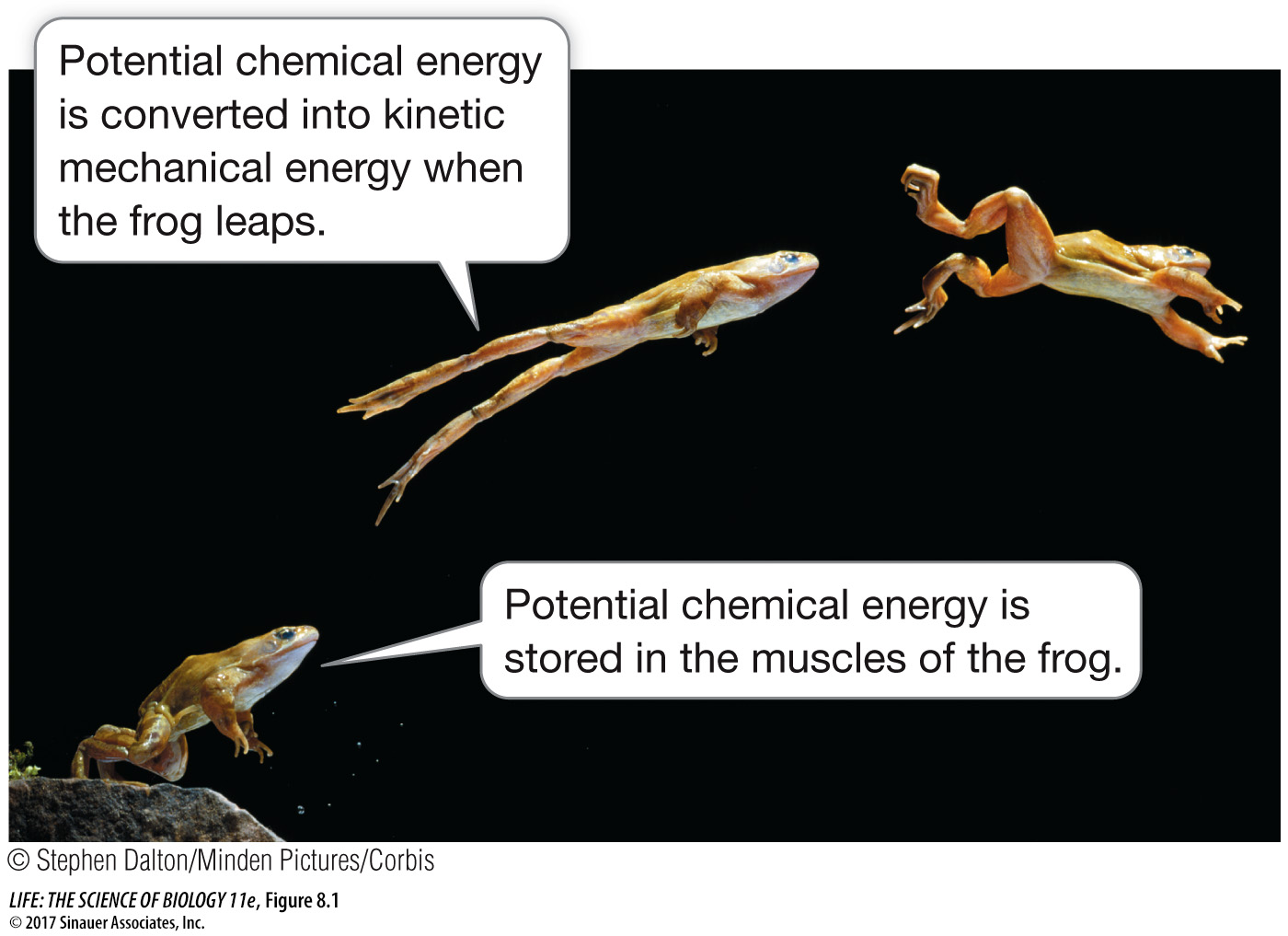There are two basic types of energy
Energy comes in many forms: chemical, electrical, heat, light, and mechanical (Table 8.1). But all forms of energy can be considered as one of two basic types (Figure 8.1):

| Form of energy | Example in biology |
|---|---|
| Chemical: Stored in bonds | Chemical energy stored in covalent bonds is released during the hydrolysis of polymers |
| Electrical: Separation of charges | Electrical gradients across cell membranes help drive the movement of ions through channels |
| Heat: Transfer due to temperature difference | Heat can be released by chemical reactions, and this can alter the internal temperature of an organism |
| Light: Electromagnetic radiation stored as photons | Light energy is captured by pigments in the eye and by plant pigments in photosynthesis |
| Mechanical: Energy of motion | Mechanical energy is used in muscle movements and movements within cells |
Potential energy is the energy of state or position—
that is, stored energy. It can be stored in many forms: in chemical bonds, as a concentration gradient, or even as an electric charge imbalance. Kinetic energy is the energy of movement—
that is, the type of energy that does work, that makes things change. For example, heat causes molecular motions and can even break chemical bonds.
Potential energy can be converted into kinetic energy and vice versa, and the form that the energy takes can also be converted. Think of reading this book: light energy is converted to chemical energy in your eyes, and then is converted to electrical energy in the nerve cells that carry messages to your brain. When you decide to turn a page, the electrical and chemical energy of nerves and muscles are converted to kinetic energy for movement of your hand and arm.